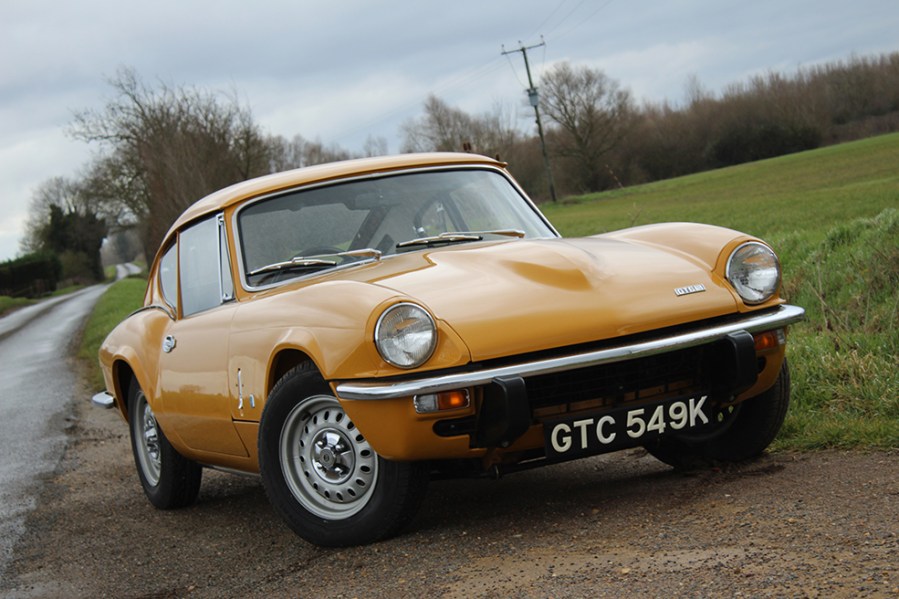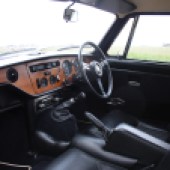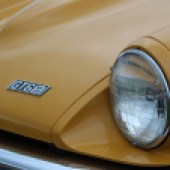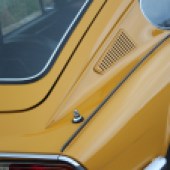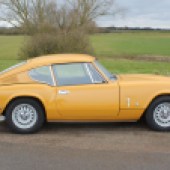Is buying an immaculate example of the Triumph GT6 a better bet than restoring one? We get behind the wheel to find out
Words and images: Jack Grover
The Triumph GT6 was the rather inevitable result of mating the six-cylinder engine from the Triumph Vitesse with the body of the Spitfire. Spitfires running at Le Mans had adopted streamlined coupe bodywork, but tests had shown that the extra weight robbed too much performance when using the road-going Spitfire’s engine. Meanwhile Triumph reasoned that a six-cylinder open-top Spitfire would tread on the toes of the ‘full size’ TR sports car. Thus the GT6 existed only with a unique liftback coupe body and a power bulge in a front end that was otherwise shared with the Spitfire.
Launched in 1966, the original GT6 had a 2.0-litre 95bhp six-pot. The combination of a six-cylinder engine and a 2+2 coupe body at a small size and relatively small price was unique, as was the GT6’s strong performance – superior to the MGB GT that was its only real rival. The GT6 quickly became the car of choice for the driving enthusiast who appreciated its speed and rather demanding cornering characteristics but also needed something practical enough for daily use.
Criticisms of the GT6’s roadholding due to the crude swing-axle rear suspension were addressed with the Mk2 of 1968 which introduced Rotoflex rubber driveshaft couplings which significantly tamed the GT6’s tendencies to break grip mid-corner. A new cylinder head and manifolds took power to 104bhp and the top speed to 107mph.
After just over two years the Mk2 was replaced by the more matured Mk3, which had reprofiled nose and tail to match the facelifted Spitfire. The expensive but effective Rotoflex couplings were ditched in 1973, replaced by a ‘swinging’ rear spring. That year also brought a brake servo as a standard and steel wheels as the only fitment. Although gathering its own band of loyal enthusiasts, many of whom bought one of each mark of GT6 in succession, sales were never enough to make a profit, especially once the Vitesse ended production in 1971. The last GT6 (of just under 41,000) was made in December 1973.
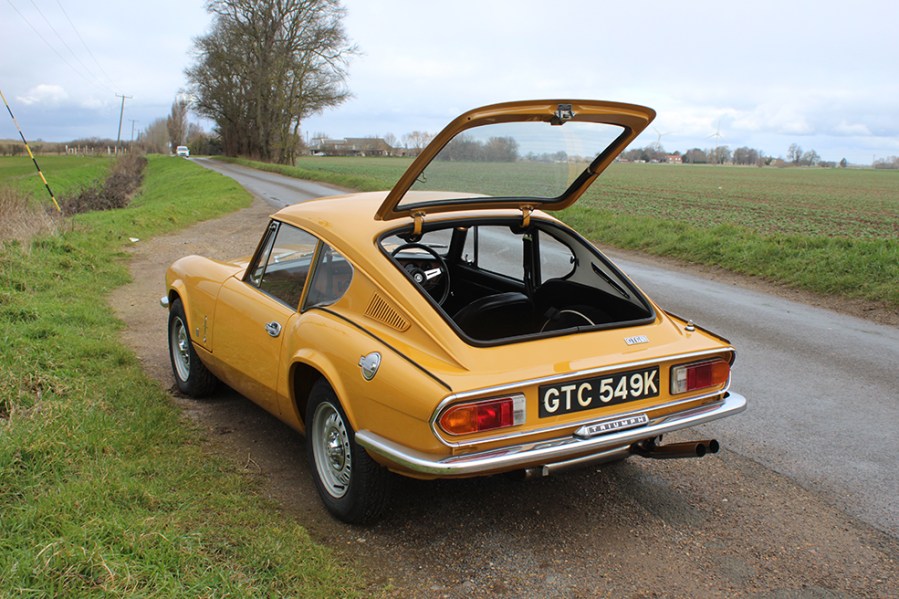
Handsome, sporty, simple to work on and with two more cylinders than a MGB, the Triumph GT6 has rightfully grown in both desirability and value in recent years. But when a company that has specialised in classic Triumphs for the best part of 40 years (TRGB in Cambridgeshire) says a car is “without doubt the best” of its type that it’s ever had for sale, you can’t help but take notice. And before you even consider the car itself, the history file accompanying this GT6 (actually two large lever-arch folders and a photo album) tells the story.
As well as all the original documents – bill of sale, service booklet, warranty card, driver’s handbooks and so on – there is a thorough financial and photographic record of the car’s body-off, bare-metal, nut-and-bolt rebuild between 1990 and 1992 at a cost – then – of over £11,000. The file includes written statements from each of the car’s owners, confirming work done and mileage covered. Also recorded is the GT6’s history as a concours prize winner at club and national level, including the Car of the Show at the Triumph International Concours and being a finalist at the Autoglym National Concours in 2000. Before all that, the car only covered 17,000 miles from new until 1980 when it was dry stored prior to its restoration, and the mileage total still stands under 40,000 over 30 years later.
Given all that, going into detail about the condition of the car is almost superfluous. Despite the restoration being over three decades ago the quality of the work, the light use the GT6 has had since and the care lavished on it means that it is still perfect. And that’s not hyperbole – as close as we could examine the Triumph in its nooks and crannies, we could not find anything amiss. It has rarely been out in anything but the best weather, and it felt wrong for us to drive it on a day that even so much as threatened rain.
It’s the same story with the cabin – all that’s missing is the ‘new car smell’. Aside from the addition of a period-looking digital radio and some footwell mats it is also totally original, unless you count the addition of a stalk controlling the overdrive, which was fitted in 2006 and was an option when the GT6 was new. Triumph interiors of the 1970s are not renowned for being especially hard-wearing, but everything here is still present with no splits, tears, cracks or even visible signs of wear – not even any creases on the driver’s seat.

The familiar story continues once the GT6’s nose has been swung out the way to reveal not only the engine but the front suspension and much else. Everything looks fresh, clean and bright, right down to the anodised surfaces on the heater valve and fuel pump. Only some signs of weathering on the fan blades really show that this isn’t a car fresh from the forecourt. There isn’t even the slightest trace of any oil leaks, which is remarkable for any British classic, let alone a GT6. Even here the paint, be it the same Saffron Yellow as the topside or chassis black, has a perfect finish and is free from defects.
Before going into the specifics, the most impressive thing about this GT6 is the overall feel of it when going down the road. The chassis-built small Triumphs are prone to feeling like a loose collection of parts travelling in formation, and could be a bit untethered and rattly even when new. This one has a real feel of solidity to it that makes it a true joy to drive.
It almost doesn’t need to be said that it drives as well as it looks – there’s something special about a small-capacity straight six and this one pulls strongly and sounds glorious. It has a sweet gearbox with effective synchromesh, light steering and perfect brakes. The ride feels firm but composed, and there are no rattles or knocks from either the underside or the interior.
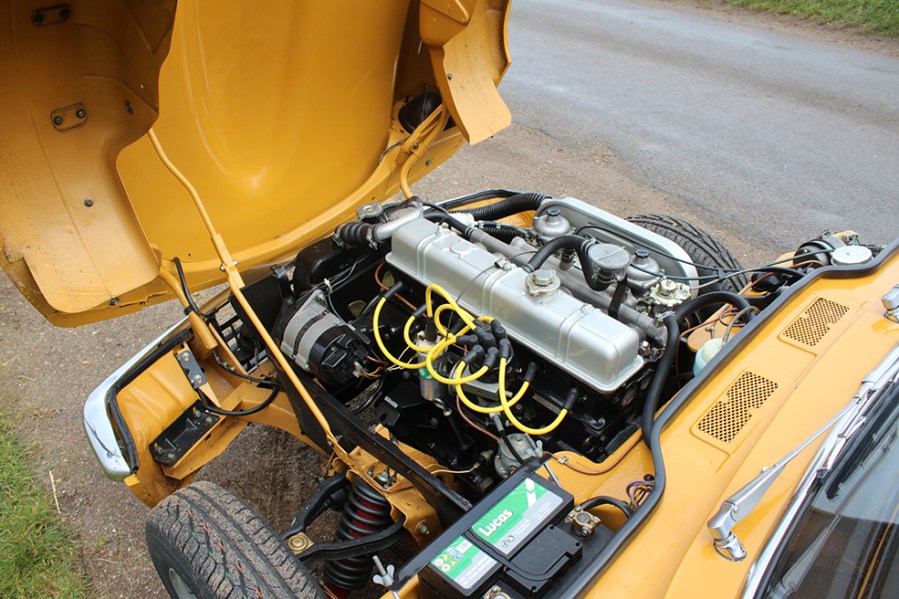
Triumph GT6: our verdict
Let’s be honest – even restoring a 1970s Triumph to ‘as new’ condition leaves a lot of room for improvement. With this GT6 that room has been put to full use and I can find nothing worth criticising about it. It would be impossible to create such a car today – you wouldn’t be able to find a low-mileage car in fundamentally good condition as a starting point, and you could spend the asking price for this one on the restoration and still come up short. On that basis this must actually be a bargain, as well as the best GT6 on the market.

